As we delve into the depths of this vast wild habitat, we uncover a masterful acrobat navigating the aerial labyrinth of branches with consummate finesse. Its lithe body moves with such fluidity and ease, it is as if it were performing a well-choreographed dance among the trees. The leopard exudes a certain grace and elegance that is captivating to witness; with its strikingly patterned coat and piercing eyes, one can’t help but marvel at its natural beauty and agility as it effortlessly navigates through the wilderness.
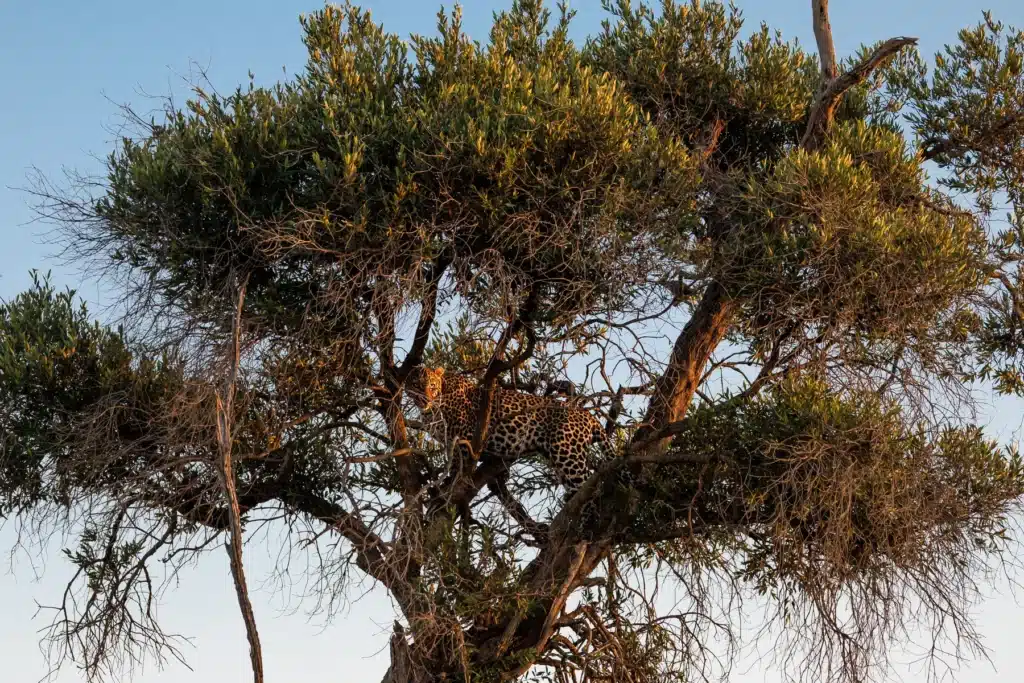
Unlike their larger counterparts such as lions, leopards are solitary hunters, relying on stealth and surprise rather than brute strength to secure their meals. Arboreal prowess is not merely an added skill—it is vital for their survival. Their retractable claws, sharp and purposeful, provide a steady grip on even the most precarious of surfaces. Coupled with their muscular limbs and powerful shoulders they can scale trees with astounding ease, often ascending to heights that would seem insurmountable to other predators.
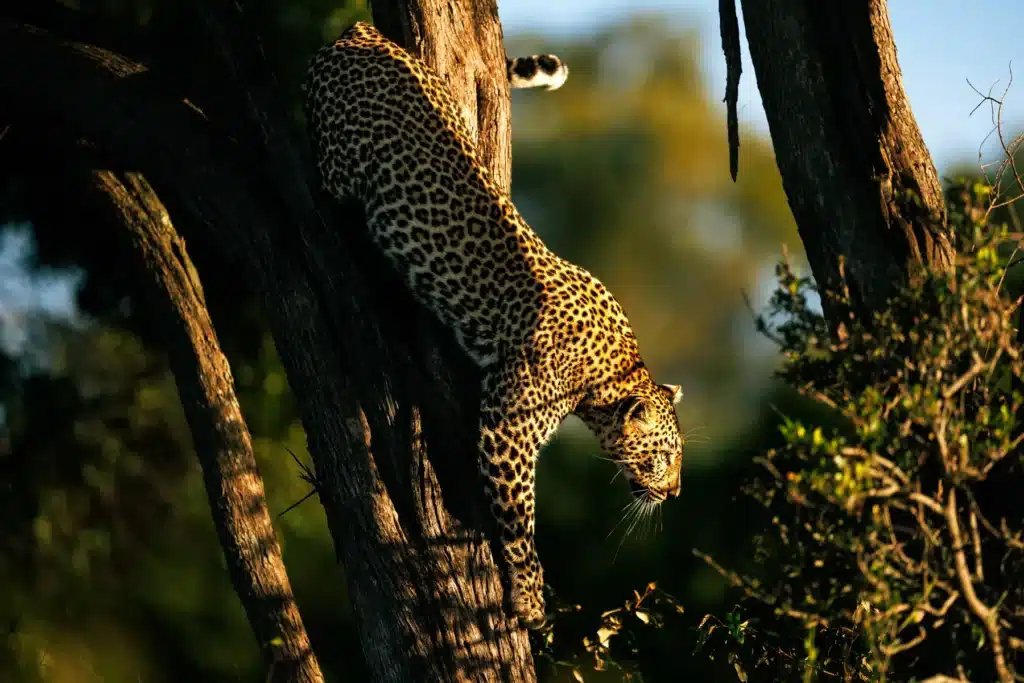

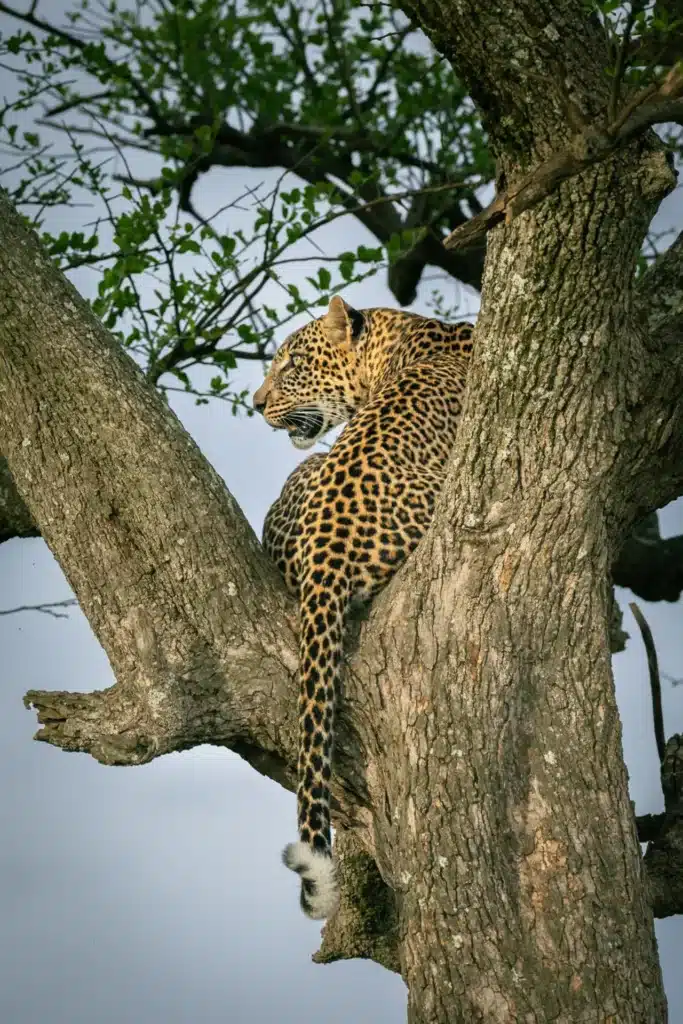
With exceptional camouflage abilities, leopards are one of the most elusive and mysterious creatures of the animal kingdom. Their beautiful coat pattern can easily blend into their surroundings, remaining unnoticed by both predators and prey. From lofty perches they survey the landscape below, patiently waiting for the opportune moment to strike. When prey wanders into their sights, they unleash a lightning-fast descent, pouncing with precision and lethal force. By using the vertical dimension, leopards become formidable predators, capable of taking down prey much larger than themselves.
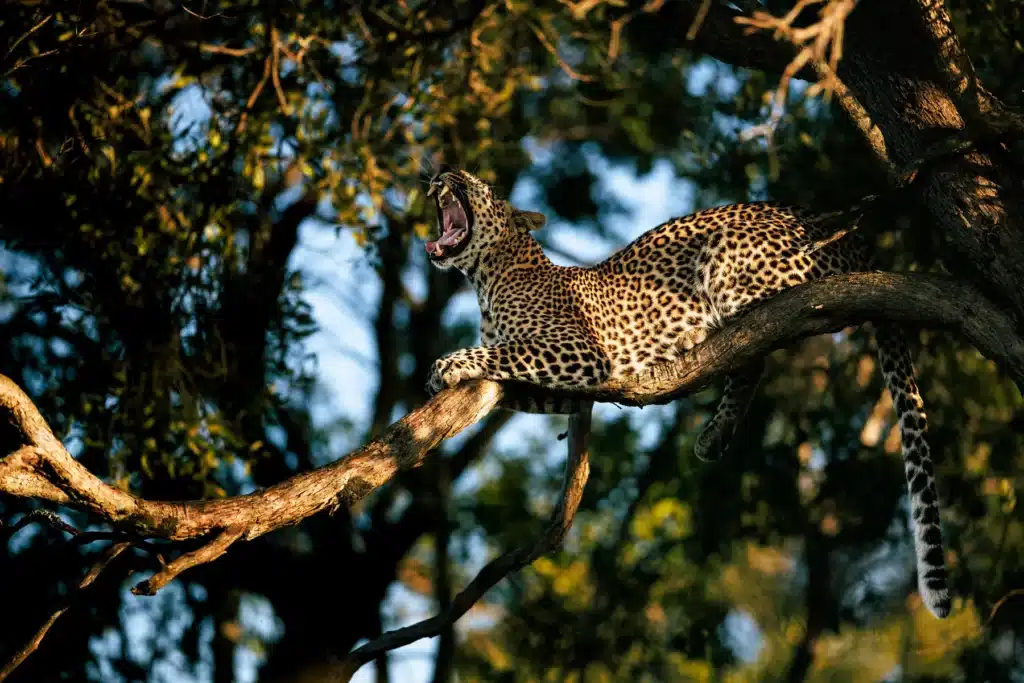
Leopards are also known for their remarkable capacity to haul their kills into the safety of the treetops. This behaviour not only protects their meal from scavengers, but also allows them to dine without interruption. This ensures they receive the nourishment needed to sustain their solitary lifestyle, sometimes for days after the kill has been made.
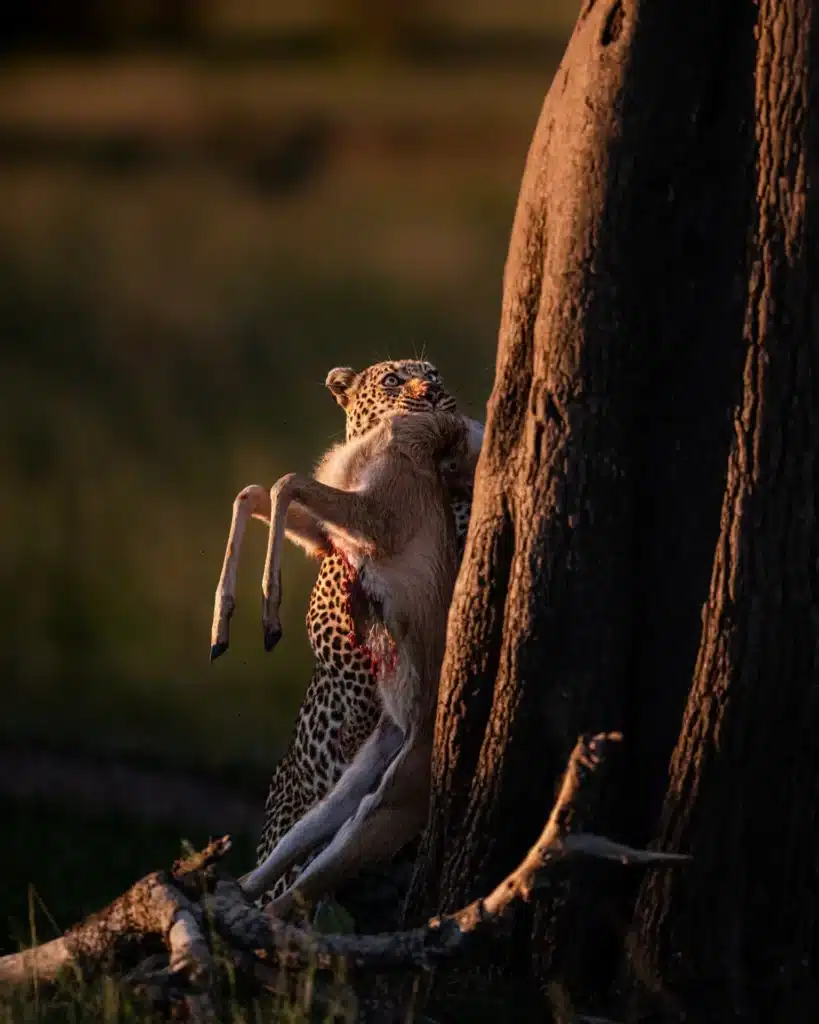
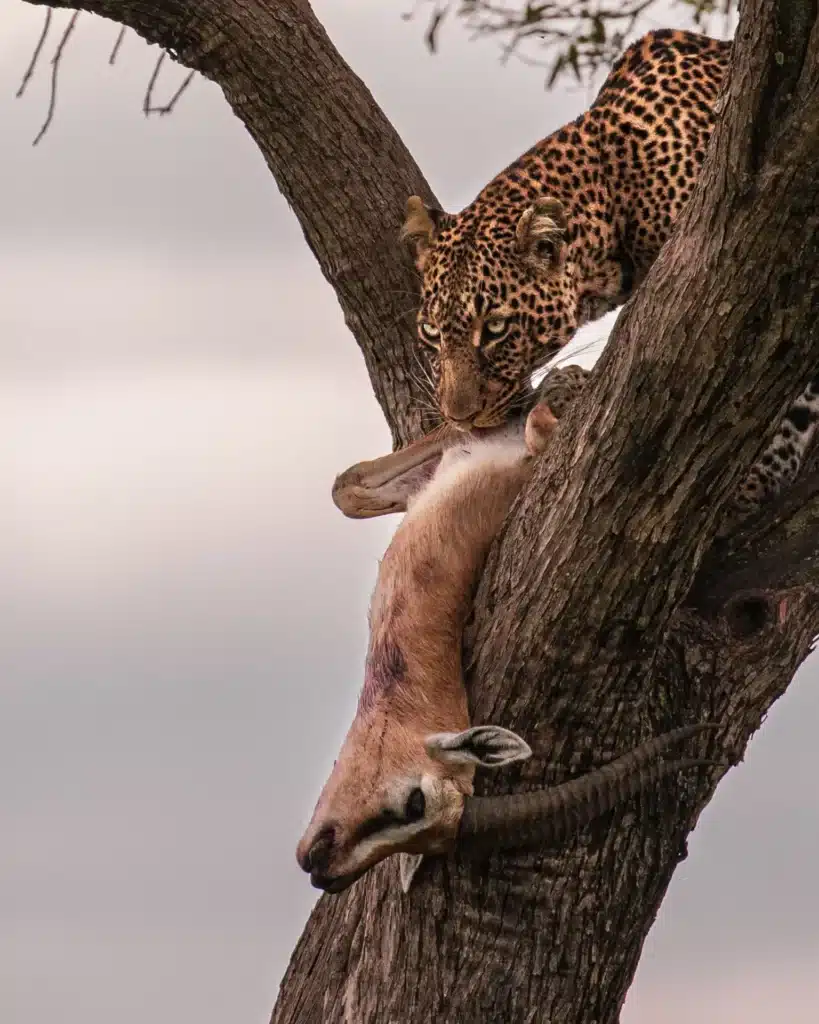
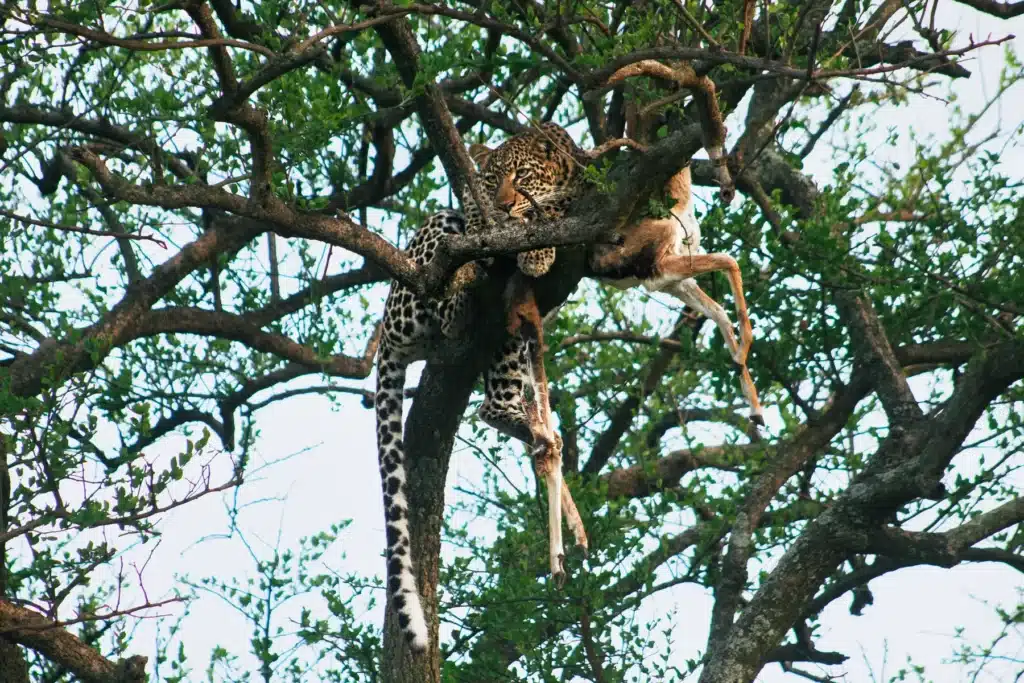
Beyond hunting and shelter, trees serve as multipurpose platforms for leopards. They use them for communication, marking their territory with scent glands located on their cheeks and by spraying urine onto branches to delineate boundaries. Trees provide vantage points for surveying their domain and for potential mates, facilitating social interactions essential for reproduction. They also provide a sense of security and comfort for these solitary creatures. The thick branches and dense foliage offer a safe haven where they can rest, groom themselves, and even raise their young. In fact, leopard cubs often hone their climbing abilities by playfully chasing each other through the treetops, preparing them for their independent lives as expert tree climbers.
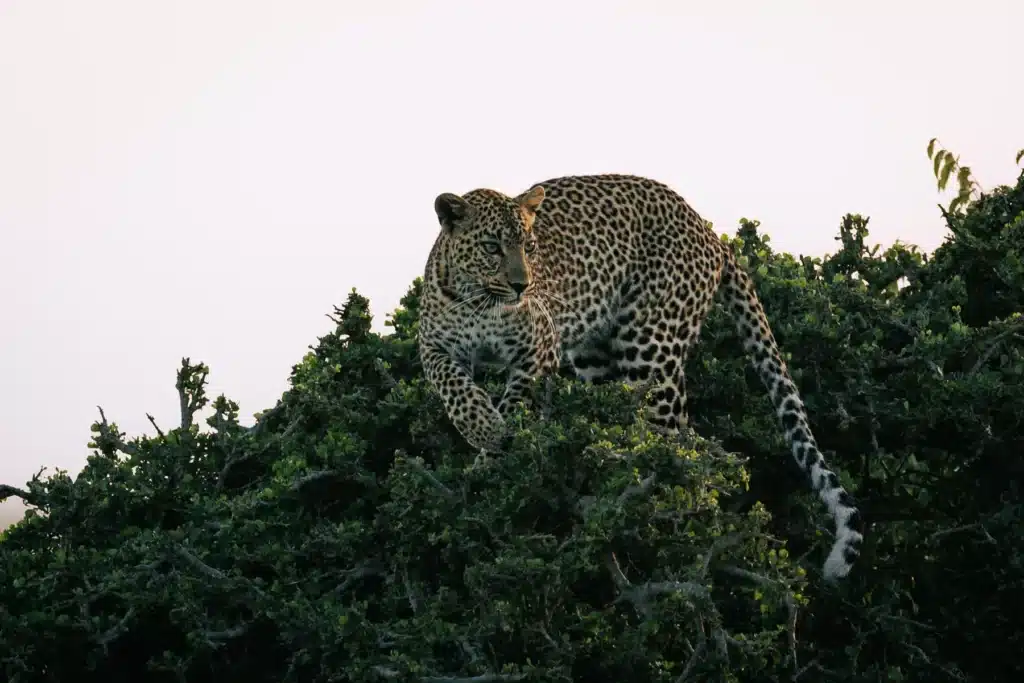
Living in this high-up habitat is not without its risks. Accidents can happen, but leopards have honed their abilities over generations, evolving to minimise such gravitational dangers. Their innate sense of balance, coupled with lightning-fast reflexes, allows them to navigate the treetops with supreme confidence, withstanding the rigours of jumping from branch to branch, even on the thinnest of tree limbs.
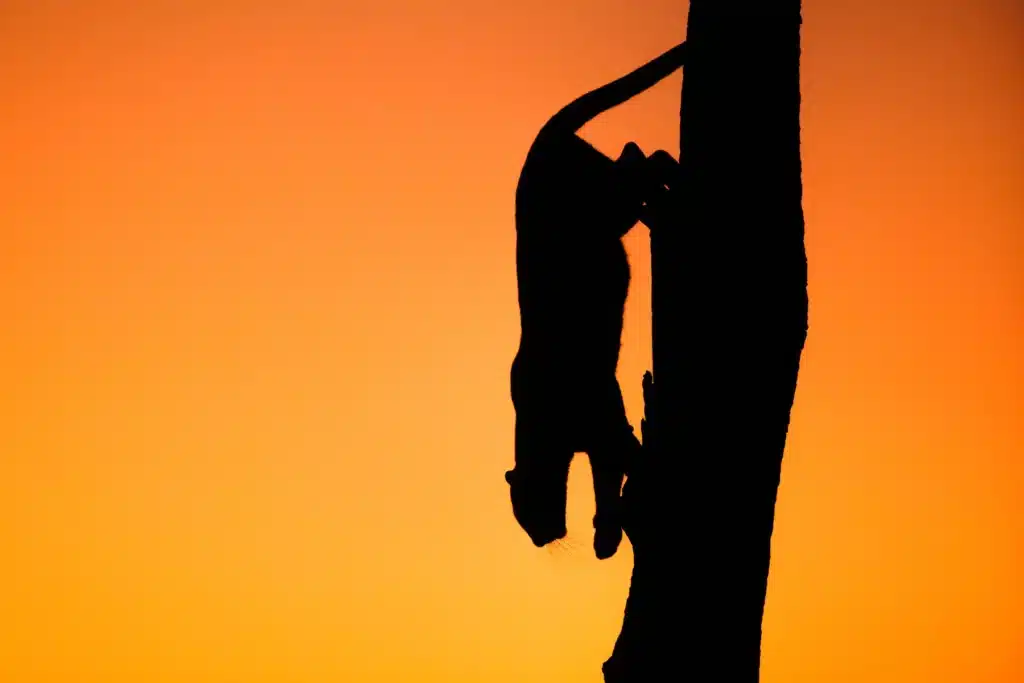
It’s truly remarkable how leopards have mastered the art of arboreal locomotion, making it seem almost effortless as they roam their high-rise kingdom. As stewards of our planet, it is imperative that we protect these magnificent creatures and the habitats they depend on for survival.
Photo credits: Japheth Supeyo, Imara Njeri, Eric Averdung, Edward Ololoso